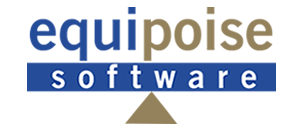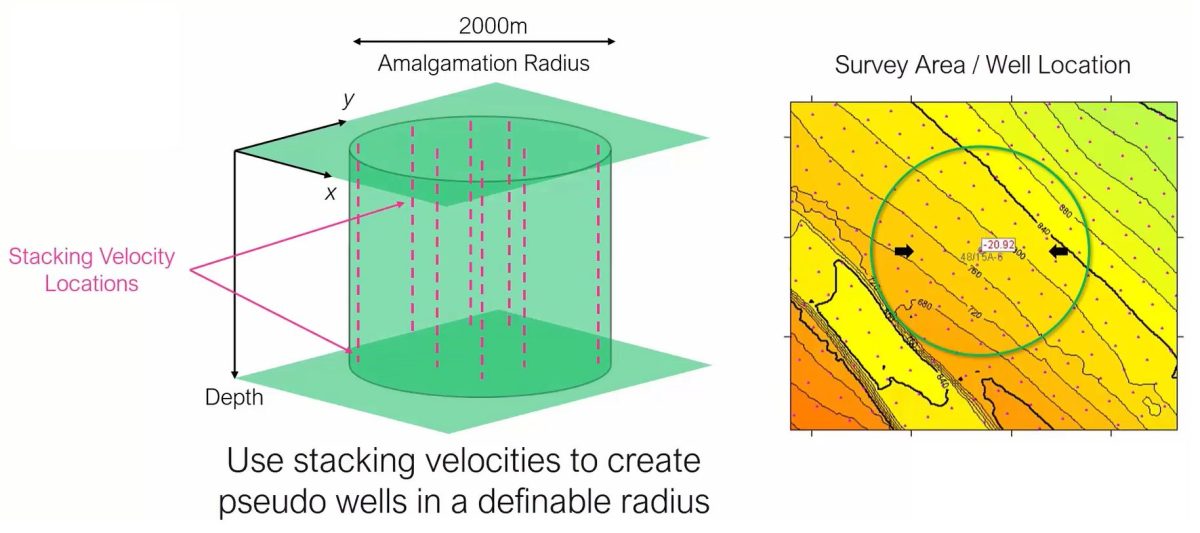When it comes to depth conversion, a lot of conventional datasets present the challenge of there being a lack of data available to accurately describe the velocity trends of the subsurface. This can include sparse well control over the areal extent of your survey area, and in addition, that the well data that is available is perhaps incomplete, where the sonic logging tool did not start from the surface, and you only have segments of logs which cover the reservoir.
Seismic Velocities
You might have a Seismic Velocity volume available, however the ray-path velocities used to optimise the seismic image are often too fast in comparison with the velocities shown in the well logs. If the goal is accuracy in depth, then it is important to scale your seismic velocities and calibrate them with your wells. This step will ensure that you can work with a more appropriate velocity for vertical depth conversion.
Velit provides you with a number of different options to perform this crucially important aspect of your workflow:
a. Value – a single percentage scaling factor can be applied where you can manually determine a best fit to your wells.
b. Graph – a single percentage scaling factor can be applied where your well data is plotted on a graph and a constant is automatically determined as a best fit for your data.
c. Grid – multiple percentage scaling factors can be applied, where each individual well will have its own unique factor, where an amalgamation radius is used to control the scaling values between wells.
Gain Confidence in Depth From Sparse Data
Velit works by creating a layer-cake model using your Time Grids and Formation Tops, where your sonic logs and check shots can provide the understanding of the velocity trends of each layer. The calibration process in the software involves determining a unique value/graph/grid for each layer in your model. Once you have performed this operation, you’ll then have strong confidence in your ability to leverage your seismic velocity data to perform a vertical depth conversion.
There are then several different options in the software which can enable you to gain confidence in depth with sparse data:
- Direct Depth Conversion – You can create a grid of your seismic velocities at the base of your layer. This grid is often noisy and will require smoothing. You can opt for a Simple Moving Average smoother, or you can use the more computationally intensive Advanced Multi-Pass Smoothing Using Local Regression, where a smoothing radius in either operation controls the degree of smoothing. Once this grid has been generated, it can then be used to directly convert your time grid for the layer to depth.
- Kriging with External Drift – You can create a grid of your seismic velocities at the base of your layer, which once again will require smoothing using either of the options discussed above. You can then perform a Mapping operation of your Vertical Apparent Interval Velocities and use the smoothed velocity grid as your external drift surface. This means that the velocities in your wells act as ‘hard’ control points, where, as you move away from your wells, you revert to the ‘soft’ control of your smoothed velocity grid. This operation is designed to tackle layers where the geology is quite simple, as it only provides lateral velocity variation and no vertical velocity resolution.
- Pseudo Wells – If your layer contains geologically complex sequences, then it will be important to capture both vertical and lateral velocity changes to accurately model the layer. Firstly, you can create pseudo-wells at the same location as your real wells. This will enable you to visualise the match between your well data and seismic velocity data to ensure that the selected scaling factor is appropriate. Next, you then delete those pseudo wells. You can then create a grid of pseudo wells, with a definable spacing, or create a pseudo-well at any arbitrary location. This process will provide you with hundreds of data points that you can leverage per layer to give you a high degree of confidence that the function you select to depth convert the layer will be reliable.
If you can’t currently perform this workflow in your existing software, then please get in touch with us now and we can arrange a demonstration and an evaluation licence for you to see the value when applied to your datasets.
If you’d like to know more about Velit then click here. To contact us for a free evaluation e-mail us on sales@equipoisesoftware.com.
The software is provided by S&P Global (who we partner with for Kingdom) with perpetual and subscription pricing available on request. We offer a series of Teams meetings throughout the evaluation to help you quickly step up the learning curve and enable you to see the results for yourself. We also provide a series of depth conversion training courses which you can click here to find out more.

